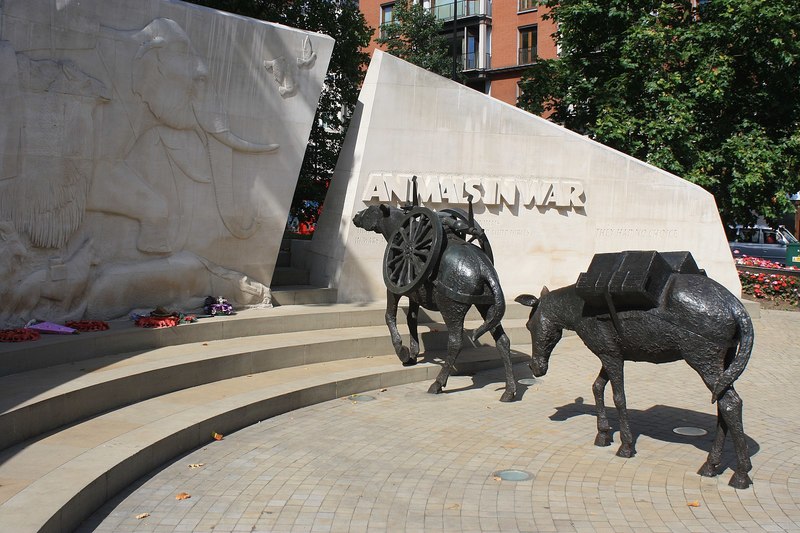Horses and Humans
The horse has been associated with humans for thousands of years. We know that the Persian Wild Ass (or Onager) was used by the Sumerians around 3,000 BC, and that in Britain some 2,300 years ago, the Iron Age people used horses for transportation of people and goods.
As well as being domesticated for day to day transport, horses have been used extensively by humans during times of war. Horses are prey animals and their quick responses and speed mean that they were well suited for use by soldiers. The oldest known manual for training horses to pull a chariot for use in battles dates back to c. 1350 B.C. By the end of World War II, horses tended to be used less in British battle, but they were still used for transportation of troops and supplies. There is a statue called The Animals In War Memorial in Hyde Park, London commemorating the millions of horses and mules that have been killed over the years in battles.

Photo: Dario Crespi
When the motor car became widespread, it was predicted that, after centuries of association with humans, the horse would be completely replaced by our new mechanical inventions. Some people believed that by the end of the twentieth century, the horse would disappear from the world completely.
However, horses remain popular with humans to this day. In some parts of the world, they are still used for transport and in war. Police forces often have mounted officers and horses are deployed during search and rescue activities in mountainous terrains where it would be difficult for a motor vehicle to drive. Cattle ranchers still use horses to help them round up herds of cattle and an estimated 100 million horses, mules and donkeys are still used for agricultural purposes worldwide.
Horses are also ridden for sport, entertainment and ceremonial purposes across the world.
It’s important to note that humans also use horses for food, both for human consumption and for pet feed, and that horse hooves are still used for the production of some types of glue. The hairs from horses tails are used to string bows for musical instruments and their hormones are used in medicines.
Read More: Protecting the Horse
